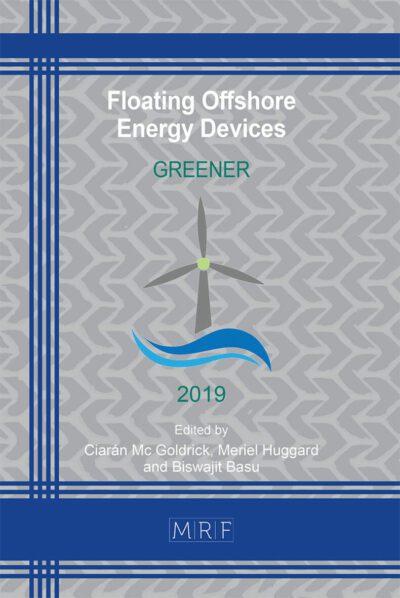Optimizing parameter selection for machine learning models to predict coating characteristics in cold spray processes on polymeric materials
Alessia Serena PERNA, Alessia AURIEMMA CITARELLA, Fabiola DE MARCO, Luigi DI BIASI, Massimo DURANTE, Genoveffa TORTORA, Antonio VISCUSI
Abstract. Cold spray (CS) is an advanced manufacturing technique used to deposit metallic layers onto various materials. It works by accelerating metallic particles to supersonic speeds with pressurized gas, enabling adhesion through mechanical interlocking upon impact with the substrate. The integration of Artificial Intelligence (AI) can significantly improve process understanding and enhance the quality of this additive manufacturing method. This work employs Finite Element Method simulations combined with an additional parameter, density, to improve the predictive accuracy of the cold spray process. To ensure consistency and comparability, Z-normalization was applied to standardize the data. Among the tested approaches, the best results for flattening and penetration depth output parameters (RMSE of 0.26 and 0.27, respectively) are achieved by Gaussian Process Regression model with a Matern 5/2 kernel applying the Z-normalization.
Keywords
Machine Learning, Cold Spray, Neural Networks, Thermal Spray
Published online 5/7/2025, 10 pages
Copyright © 2025 by the author(s)
Published under license by Materials Research Forum LLC., Millersville PA, USA
Citation: Alessia Serena PERNA, Alessia AURIEMMA CITARELLA, Fabiola DE MARCO, Luigi DI BIASI, Massimo DURANTE, Genoveffa TORTORA, Antonio VISCUSI, Optimizing parameter selection for machine learning models to predict coating characteristics in cold spray processes on polymeric materials, Materials Research Proceedings, Vol. 54, pp 2058-2067, 2025
DOI: https://doi.org/10.21741/9781644903599-221
The article was published as article 221 of the book Material Forming
![]() Content from this work may be used under the terms of the Creative Commons Attribution 3.0 license. Any further distribution of this work must maintain attribution to the author(s) and the title of the work, journal citation and DOI.
Content from this work may be used under the terms of the Creative Commons Attribution 3.0 license. Any further distribution of this work must maintain attribution to the author(s) and the title of the work, journal citation and DOI.
References
[1] R.N. Raoelison, Y. Xie, T. Sapanathan, M.P. Planche, R. Kromer, S. Costil, C. Langlade, Cold gas dynamic spray technology: A comprehensive review of processing conditions for various technological developments till to date, Addit Manuf 19 (2018) 134–159. https://doi.org/10.1016/j.addma.2017.07.001
[2] R. Della Gatta, A.S. Perna, A. Viscusi, G. Pasquino, A. Astarita, Cold spray deposition of metallic coatings on polymers: a review, J Mater Sci (2021). https://doi.org/10.1007/s10853-021-06561-2
[3] Malamousi, K., Delibasis, K., Allcock, B., & Kamnis, S. (2022). Digital transformation of thermal and cold spray processes with emphasis on machine learning. Surface and Coatings Technology, 433, 128138. https://doi.org/10.1016/j.surfcoat.2022.128138
[4] Savangouder, R. V., Patra, J. C., & Palanisamy, S. (2024). A Machine Learning Technique for Prediction of Cold Spray Additive Manufacturing Input Process Parameters to Achieve a Desired Spray Deposit Profile. IEEE Transactions on Industrial Informatics. https://doi.org/10.1109/TII.2024.3417300
[5] Eberle, M., Pinches, S., Osborne, M., Qin, K., & Ang, A. (2024). Analysis of Data Generation and Preparation for Porosity Prediction in Cold Spray using Machine Learning. Journal of Thermal Spray Technology, 1-22. https://doi.org/10.1007/s11666-024-01760-0
[6] Eberle, M., Pinches, S., Tai, W. K. W., Guzman, P., King, H., Zhou, H., & Ang, A. (2025). Porosity prediction of cold sprayed titanium parts using machine learning. Computational Materials Science, 246, 113426. https://doi.org/10.1016/j.commatsci.2024.113426
[7] Q. Wang, X. Luo, S. Tsutsumi, T. Sasaki, C. Li, N. Ma, Measurement and analysis of cold spray residual stress using arbitrary Lagrangian–Eulerian method, Addit Manuf 35 (2020) 101296. https://doi.org/10.1016/j.addma.2020.101296
[8] D. Garcia-Gonzalez, A. Rusinek, T. Jankowiak, A. Arias, Mechanical impact behavior of polyether–ether–ketone (PEEK), Compos Struct 124 (2015) 88–99. https://doi.org/10.1016/j.compstruct.2014.12.061
[9] Hearst, M. A., Dumais, S. T., Osuna, E., Platt, J., & Scholkopf, B. (1998). Support vector machines. IEEE Intelligent Systems and their applications, 13(4), 18-28. 10.1109/5254.708428
[10] Kramer, O., & Kramer, O. (2013). K-nearest neighbors. Dimensionality reduction with unsupervised nearest neighbors, 13-23. https://doi.org/10.1007/978-3-642-38652-7_2
[11] Dietterich, T. G. (2000, June). Ensemble methods in machine learning. In International workshop on multiple classifier systems (pp. 1-15). Berlin, Heidelberg: Springer Berlin Heidelberg. https://doi.org/10.1007/3-540-45014-9_1
[12] Schulz, E., Speekenbrink, M., & Krause, A. (2018). A tutorial on Gaussian process regression: Modelling, exploring, and exploiting functions. Journal of mathematical psychology, 85, 1-16. https://doi.org/10.1016/j.jmp.2018.03.001
[13] Abdi, H., Valentin, D., & Edelman, B. (1999). Neural networks (No. 124). Sage.
[14] Pan, J. X., Fang, K. T., Pan, J. X., & Fang, K. T. (2002). Maximum likelihood estimation. Growth curve models and statistical diagnostics, 77-158. https://doi.org/10.1007/978-0-387-21812-0_3
[15] C.E. Rasmussen, Gaussian Processes in machine learning, Lecture Notes in Computer Science (Including Subseries Lecture Notes in Artificial Intelligence and Lecture Notes in Bioinformatics). 3176 (2004) 63–71. https://doi.org/10.1007/978-3-540-28650-9_4/COVER
[16] J. Nevitt, G.R. Hancock, Improving the Root Mean Square Error of Approximation for Nonnormal Conditions in Structural Equation Modeling, http://Dx.Doi.Org/10.1080/00220970009600095. 68 (2010) 251–268.
[17] G.I. Webb, C. Sammut, C. Perlich, T. Horváth, S. Wrobel, K.B. Korb, W.S. Noble, C. Leslie, M.G. Lagoudakis, N. Quadrianto, W.L. Buntine, N. Quadrianto, W.L. Buntine, L. Getoor, G. Namata, L. Getoor, X.J.J. Han, J.-A. Ting, S. Vijayakumar, S. Schaal, L. de Raedt, Encyclopedia of Machine Learning, Encyclopedia of Machine Learning. (2010) 613–624. https://doi.org/10.1007/978-0-387-30164-8_488
[18] J. Fürnkranz, P.K. Chan, S. Craw, C. Sammut, W. Uther, A. Ratnaparkhi, X. Jin, J. Han, Y. Yang, K. Morik, M. Dorigo, M. Birattari, T. Stützle, P. Brazdil, R. Vilalta, C. Giraud-Carrier, C. Soares, J. Rissanen, R.A. Baxter, I. Bruha, R.A. Baxter, G.I. Webb, L. Torgo, A. Banerjee, H. Shan, S. Ray, P. Tadepalli, Y. Shoham, R. Powers, Y. Shoham, R. Powers, G.I. Webb, S. Ray, S. Scott, H. Blockeel, L. De Raedt, Mean Absolute Error, Encyclopedia of Machine Learning. (2011) 652–652. https://doi.org/10.1007/978-0-387-30164-8_525














